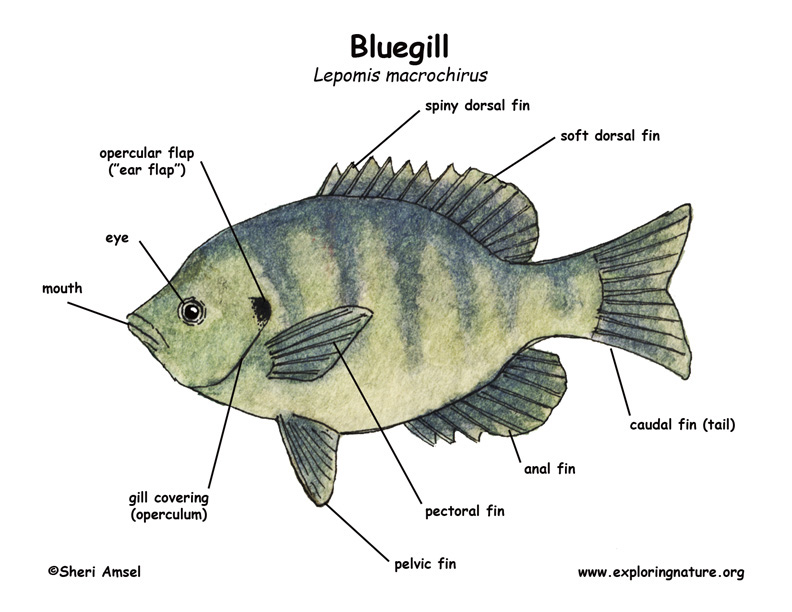

They were found from southeastern Canada through northern Mexico, but have been introduced around the world.
They live in freshwater lakes, ponds and marshes. They prefer areas with water plants for protection from predators. They also can live in streams that have slow moving water.
They are small, rounded fish, flat from side to side in the sunfish family. Their name comes from a blue spot on the gill cover. They can weigh up to 5 pounds (2 kg) and reach more than a foot long, but are usually much smaller – less than 6 inches. They have small mouths. They have a sharp spiny dorsal fin that gets softer toward the back. They are greenish brown and lighter on the belly.
They are active in the early morning staying hidden during the day. They may travel in schools for protection from predators. Males will grunt to try to attract a mate.
They are carnivores eating water insects, small fish, worms, crayfish and even snails. They also will eat algae and other plant materials.
Males use their fins to fan a dent in the sandy bottom for a nest. They do this in shallow water in the spring once the water temperature reaches about 65°, though spawning can happen all summer. They nest in a colony of dozens of males. Females lay up to 50,000 eggs in several nests. The males guard the eggs, fanning water over the eggs to keep them free of debris. They do this until the eggs hatch and the fry scatter.
Kingdom: Animalia
Phylum: Chordata
Subphylum: Vertebrata
Class: Actinopterygii
Order: Perciformes
Suborder: Percoidei
Family: Centrarchidae
Genus: Lepomis
Species: macrochirus
When you research information you must cite the reference. Citing for websites is different from citing from books, magazines and periodicals. The style of citing shown here is from the MLA Style Citations (Modern Language Association).
When citing a WEBSITE the general format is as follows.
Author Last Name, First Name(s). "Title: Subtitle of Part of Web Page, if appropriate." Title: Subtitle: Section of Page if appropriate. Sponsoring/Publishing Agency, If Given. Additional significant descriptive information. Date of Electronic Publication or other Date, such as Last Updated. Day Month Year of access < URL >.
Amsel, Sheri. "Bluegill" Exploring Nature Educational Resource ©2005-2024. December 16, 2024
< http://www.exploringnature.org/db/view/Bluegill >

